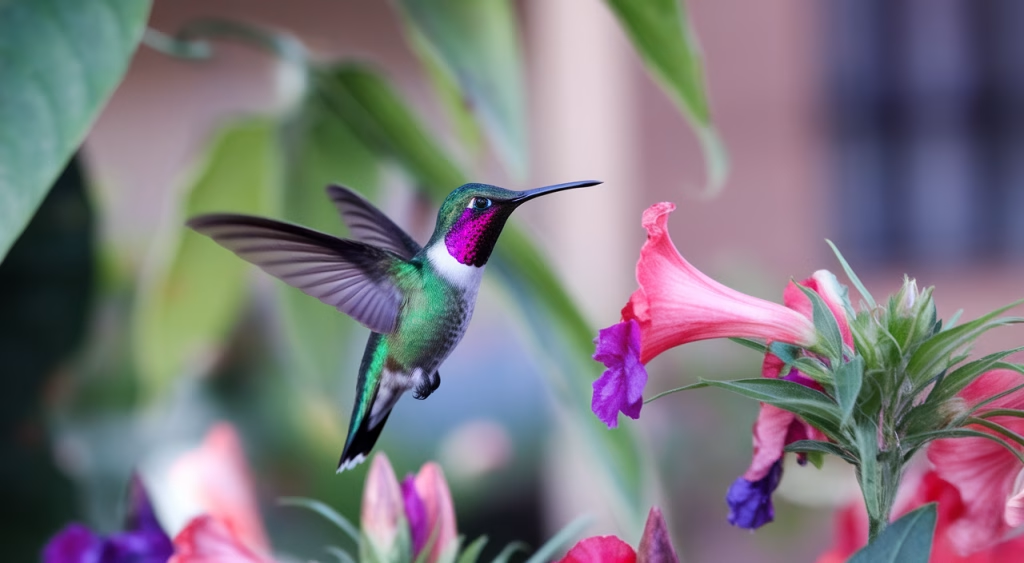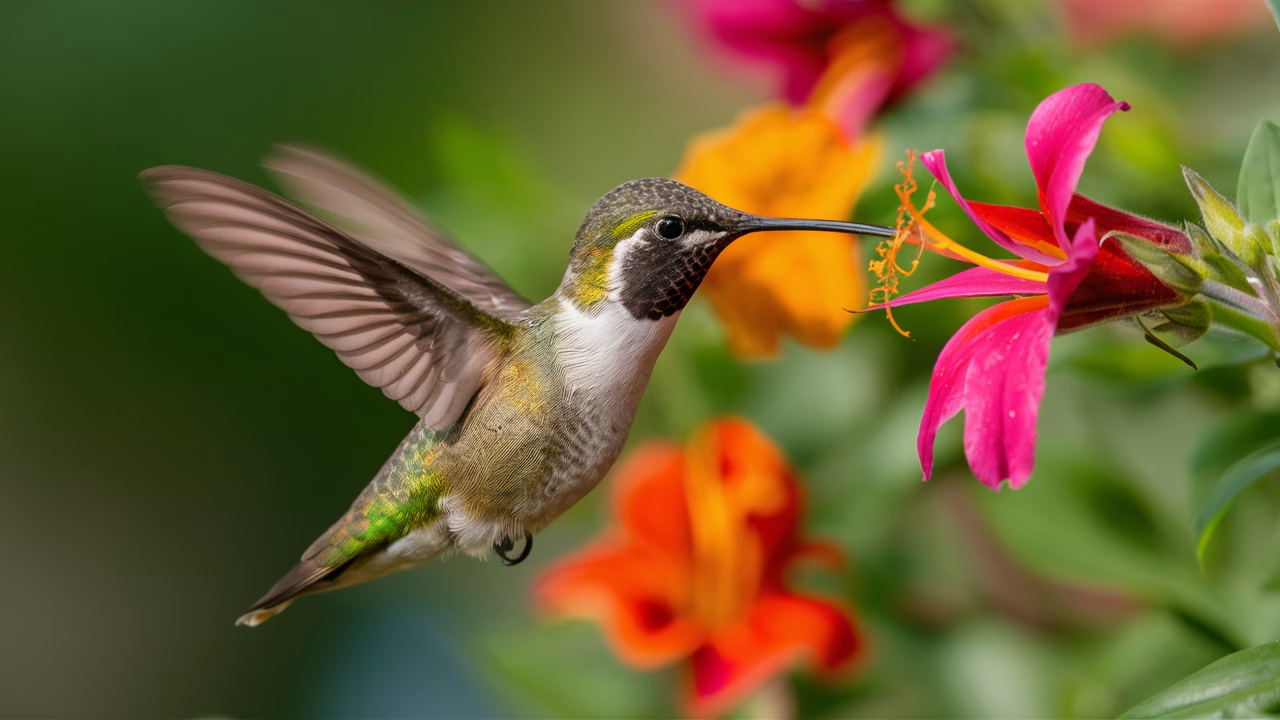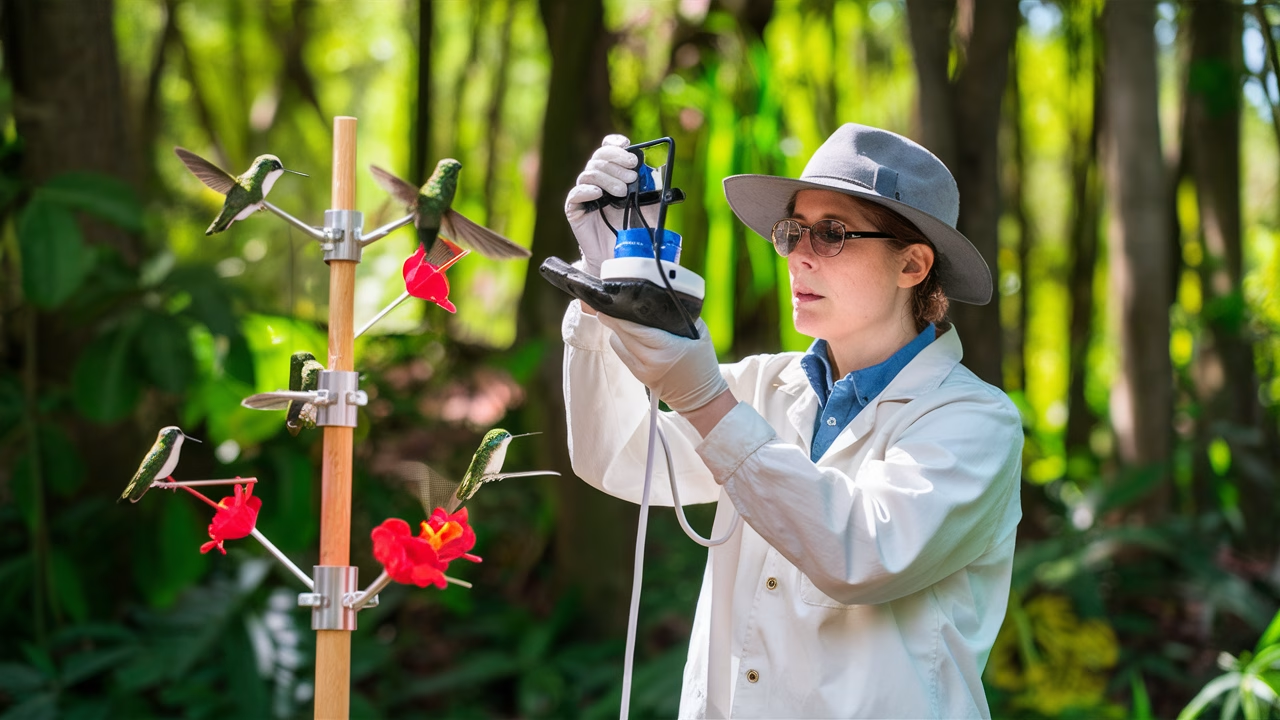Do hummingbirds really remember every flower they visit?
Yes — and not just vaguely! Hummingbirds use highly specialized memory mechanisms to recall the exact nectar status of individual flowers, including when they last visited and how rewarding it was. This incredible feat of bird cognition helps them thrive in competitive environments by optimizing nectar collection.
TL;DR: How Hummingbirds Remember Flower Visits
- Hummingbirds remember which flowers they’ve visited and when.
- They use their episodic-like memory to track nectar levels over time.
- This flower visit memory helps them avoid empty blooms.
- They even map multiple nectar locations in 3D space when foraging.
- Scientists study bird cognition using behavioral tests and tracking data.
- Real-life observations show hummingbirds revisiting replenished flowers with precision.
If you’ve ever spent time watching hummingbirds dart among blossoms like tiny helicopters, you might’ve wondered: how do they avoid visiting the same flower too frequently? After all, in nature, time wasted equals energy lost — and energy is everything for hummingbirds.
What’s fascinating is that hummingbirds remember the flowers they’ve visited with astonishing precision. Imagine trying to keep track of dozens of ice cream shops across several city blocks, remembering which ones have your flavor in stock — and when they’ll restock. That’s the level of mental effort our tiny, feathered friends handle daily.
Research shows that hummingbirds possess memory skills akin to what we call “episodic memory” — the ability to recall specific events in time and space. And for them, these aren’t idle recollections; it’s a matter of survival. Their remarkable bird cognition abilities allow them to efficiently navigate complex foraging landscapes.
Memory Mechanisms for Tracking Nectar Locations: Wiring for Precision
Let’s zoom into the brain circuitry behind this magic. When a hummingbird visits a flower, its nervous system kicks into mapping mode. Using visual landmarks, color cues, and timing, it encodes the flower’s location and nectar status into short- and long-term memory structures.
This flower visit memory operates on two critical levels:
- Spatial memory for tracking the exact nectar locations across foraging territories.
- Temporal memory for estimating when a flower will be refilled with nectar.
What we call memory mechanisms in neuroscience involve the hippocampus — particularly well-developed in hummingbirds — which functions like a GPS combined with a nectar-replenishment scheduler.
Hummingbirds are thought to use a time-stamped method, remembering not just which flower, but when it was last visited. This sophisticated bird cognition minimizes wasted return trips and maximizes energy payoff during their intense daily foraging.
Real-Life Observations: How This Works in the Wild
Here’s what often happens during field observation: a hummingbird makes a circuit of multiple flowers in a patch. Ten minutes later, it returns — but not at random. It skips early-visited flowers that haven’t had time to refill and hits the ones visited 20+ minutes ago. That’s not instinct; it’s flower visit memory at work.
In Costa Rican cloud forests, for example, researchers observed that rufous-tailed hummingbirds exhibit highly effective traplining — a behavior where they follow a fixed foraging route. This route isn’t static; it adapts to nectar availability based on their memory of when different nectar locations were last productive.
In urban gardens, homeowners often report a “territorial hummer” that focuses on particular blooms and feeders at predictable intervals. What they’re witnessing isn’t just personality — it’s active use of sophisticated memory mechanisms that help these birds survive in competitive environments.
Studying Hummingbird Cognition: Research Techniques
Curious how scientists uncover all this memory magic? The field of bird cognition research blends clever experimentation with sharp observation. Here are proven techniques for studying hummingbird cognition that reveal how hummingbirds remember their flower visits:
| Technique | Purpose |
|---|---|
| Artificial Flower Arrays | Test memory by controlling nectar availability and color-coding specific locations. |
| Timed Replenishment Studies | Evaluate how birds use temporal cues to revisit nectar sources at optimal times. |
| RFID Tracking Systems | Monitor detailed movement paths and reveal sophisticated traplining behavior patterns. |
These studies demonstrate that hummingbirds are excellent spatial and temporal strategists, which isn’t surprising when you consider that their survival depends on successful feeding every 10-15 minutes throughout their active hours.
Benefits of Hummingbird Nectar Memory: Why These Skills Matter
So what’s the big deal about remembering flowers? For these birds, the benefits of hummingbird nectar memory are genuinely life-saving. Each successful foraging trip burns precious fat and sugar reserves. Each failed attempt could mean starvation. Hummingbirds have the highest metabolic rate of any bird relative to their size, making efficient nectar location recall absolutely critical.
This flower visit memory also reduces competition between individuals — helping each bird exploit high-reward flowers while avoiding recently drained ones. It allows multiple hummingbirds to share the same habitat with minimal conflict by maintaining personal foraging territories and timing patterns.
From an ecological perspective, their sophisticated memory mechanisms make hummingbirds more effective pollinators because their visits are precisely timed — flowers are more likely to be successfully pollinated when a bird arrives at just the right nectar production stage.
Final Thoughts: Tiny Brains, Giant Smarts
Nature never ceases to amaze us. That a creature weighing mere grams can display such intelligent behavior reminds us just how rich and complex the natural world truly is. The fact that hummingbirds remember each flower visit — its exact location, nectar reward, and time elapsed since last visit — shows that brain size doesn’t limit cognitive power. Their remarkable memory skills and advanced bird cognition have evolved not only to improve foraging efficiency but also to shape broader ecological relationships.
So the next time you sip your morning coffee and watch a hummingbird dart from bloom to bloom, know this: there’s a tiny biological computer in that feathered head, calculating optimal nectar locations, timing visits, and remembering far more detail than meets the eye.
Frequently Asked Questions
Do hummingbirds remember every flower they visit?
Yes, hummingbirds use detailed memory to track the location and timing of nectar-rich flowers, often revisiting them only when they’re likely to have replenished.
How do scientists test hummingbird flower memory?
Researchers use artificial flower setups with timed nectar refills to test how hummingbirds recall flower location and visit timing.
Why is flower visit memory important for hummingbirds?
It helps them maximize nectar intake while avoiding wasted energy on already-depleted blooms — a crucial advantage given their high energy needs.
Is hummingbird memory learned or instinctive?
Hummingbird memory involves both instinctive foraging patterns and learned knowledge of specific locations and times based on personal experience.
Can hummingbirds recognize individual flowers or only general areas?
They can distinguish specific flowers and use visual cues, not just general locations, to manage their nectar trapline effectively.
How long can hummingbirds remember nectar sources?
Studies suggest hummingbirds can retain location and timing information for several days — adjusting their foraging behavior accordingly.
Do all hummingbirds use this type of memory?
Yes, although species may vary in detail and complexity. Larger territorial species often show the most sophisticated flower tracking behavior.





